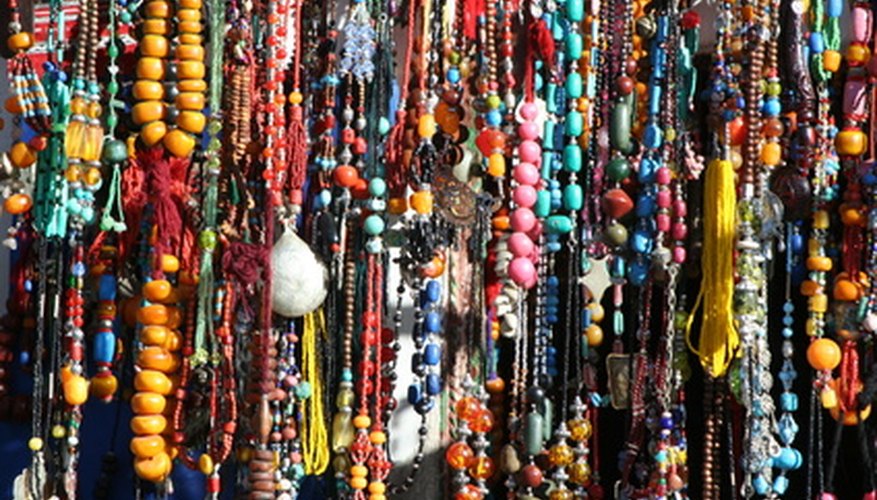Beads play a huge part in some African cultures. Meanings behind African beads include pride, beauty, culture, power and identity. During the slave trade, Africans were sold in exchange for beads.
History
In 2004, archaeologists with the Blombos Cave Project found small shells strung together in a South African cave and dated them as more than 75,000 years old. At one point, African beads were used as currency. In the 18th and 19th centuries, millions of coloured shell beads were shipped from European countries to Africa in exchange for slaves.
Significance
The Zulu people of South Africa developed a code for the size and colours of their beads. Large and colourful beads symbolise wealth and social status. Blue beads are thought to enhance fertility. Red beads are reserved for ceremonies like tribal festivals, funerals, circumcisions of young boys and harvest dances. Black implies age and wisdom. Yellow means high rank, and gold indicates a long life. Beads can also convey identity and cultural significance--for example, if a woman is married or a man is a warrior or an elder. Beads also signify a person's rank. African beads are also associated with Christianity and Islam, just as those religions use prayer beads in other parts of the world.
- The Zulu people of South Africa developed a code for the size and colours of their beads.
- Beads can also convey identity and cultural significance--for example, if a woman is married or a man is a warrior or an elder.
Features
Because of the rainbow of colours embedded in them, Mali wedding beans signifiy beauty to tribes in South Africa. They are given to brides on their wedding day. Stone and metal beads are the most durable. African people also make beads out of natural materials like bone, hell, wood, amber and glass. For smooth-textured beads, ceramic or bamboo materials are used.
- Because of the rainbow of colours embedded in them, Mali wedding beans signifiy beauty to tribes in South Africa.
- For smooth-textured beads, ceramic or bamboo materials are used.
Usage
African beads have been exchanged for food and livestock. Some Africans even believe the beads have magical powers, such as imparting fertility. Some African women wear beads around their waists-- to enhance their figures, to entice men, and for healing and rejuvenation purposes. In the 21st century, African people continue to use and wear beads for cultural recognition, status and adornment.
- African beads have been exchanged for food and livestock.
- Some African women wear beads around their waists-- to enhance their figures, to entice men, and for healing and rejuvenation purposes.
Techniques
The techniques of African beadwork may vary. Beadworkers are people who use beads to make jewellery, clothing, decorate sculptures, and other ceremonial objects. They may place beads on fibre cord or metal wire to create their beadwork, or they may stitch to the back of fibre. Beadworkers continue to be a tradition and contemporary artists continue to experiment with new designs and colours.
- The techniques of African beadwork may vary.
- Beadworkers are people who use beads to make jewellery, clothing, decorate sculptures, and other ceremonial objects.
Beadmakers actually produce and create the beads themselves from various materials. They have provoked the attention of bead collectors and jewellery designers nationwide. Beadmaking industries exist among Krobo people, who live in Ghana.
